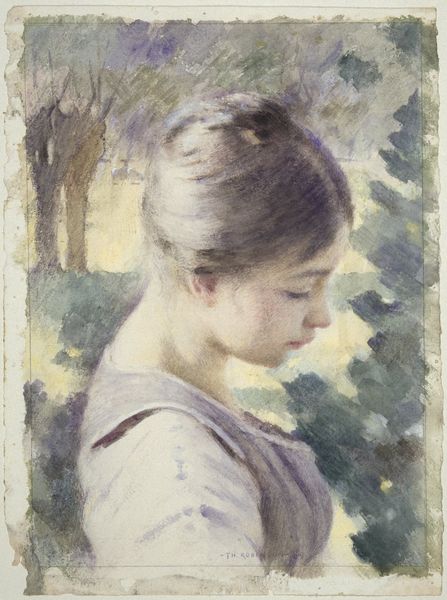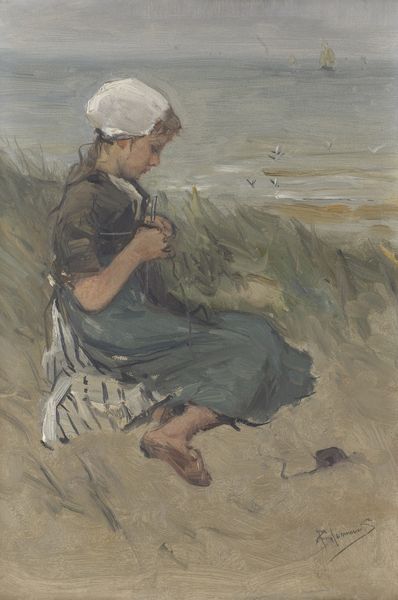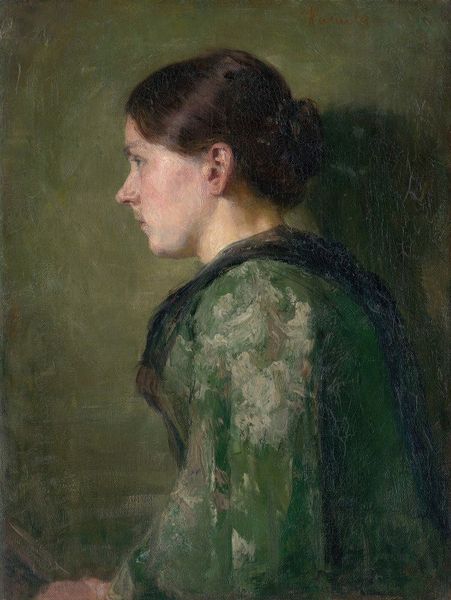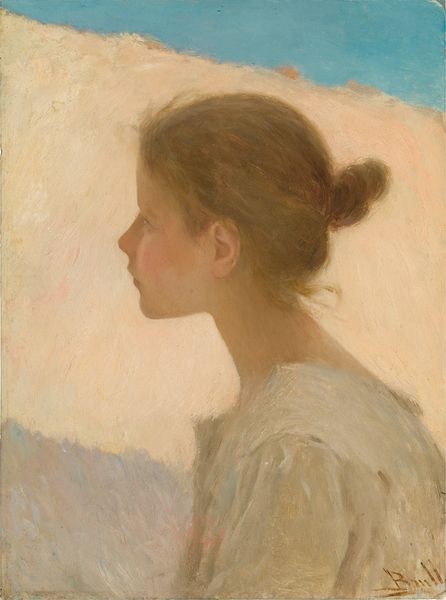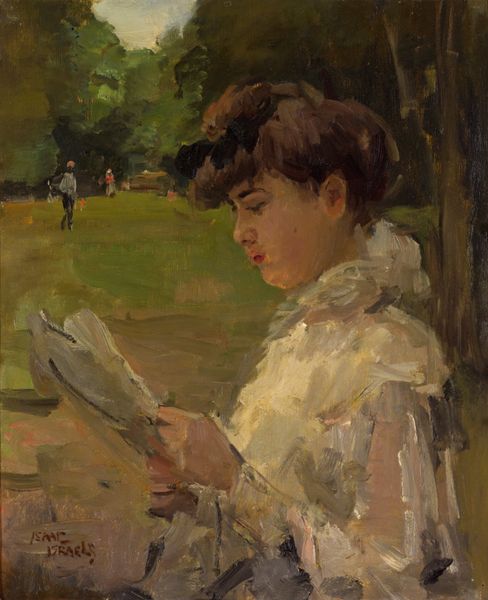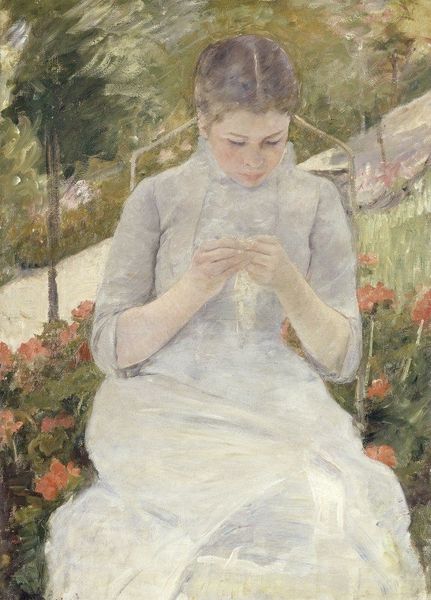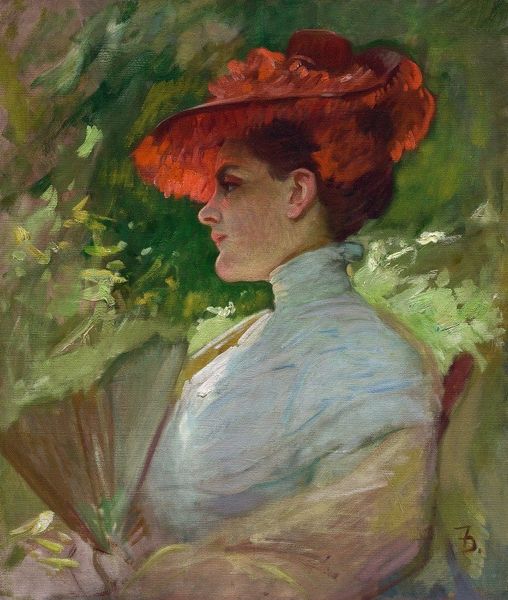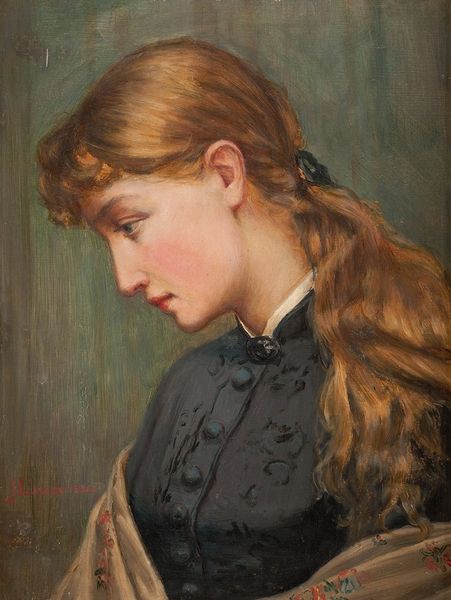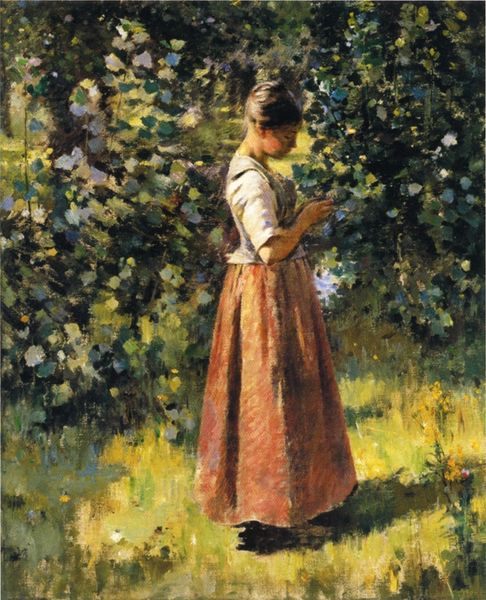
painting, oil-paint
#
portrait
#
painting
#
impressionism
#
oil-paint
#
figuration
#
oil painting
Copyright: Public domain
Editor: So, here we have Theodore Robinson's "Variation on 'la Vachere'," an oil painting from 1889. There’s something so serene about it, almost melancholic. The woman seems completely absorbed in whatever she's doing with her hands. What do you see in this piece, from your perspective? Curator: What strikes me is the way Robinson, an American Impressionist, engages with representations of women and labor. Here we see a woman, not in leisure, but seemingly at work. It pushes us to ask: what does it mean to depict a woman in a posture of labor during this period? It is the late 19th century, the role of women in the public sphere is still up for debate and access to safe labour conditions and the workplace continues to be limited. Do you think Robinson is making a statement about female empowerment or something else? Editor: That’s interesting. I hadn't considered the aspect of labor so explicitly. I was focused more on the aesthetic and emotional aspects. I do feel this gaze upon female subjects at this moment can both celebrate and commodify. But seeing the work depicted through a social lens, I see something about her concentration that almost feels like a quiet act of resistance to the dominant narratives of the time. Curator: Exactly. This also forces us to consider the Impressionists fascination for fleeting moments. Is there something specifically meaningful about the labour of women? How the paintings draw attention to that everyday movement, which we should be studying, especially at this time of change? This period saw significant social upheaval, and art was often at the forefront, reflecting, questioning, or reinforcing those changes. I ask what sort of contribution is being made in “Variation on ‘la Vachere’”? Editor: I suppose I was just taking it at face value without thinking of all these layered considerations! Thanks for giving me a lot to consider, particularly around how Impressionism reflects broader social changes. Curator: Absolutely. Seeing art as part of these interwoven stories, these wider historical power dynamics, transforms the work and the conversation that follows.
Comments
No comments
Be the first to comment and join the conversation on the ultimate creative platform.
